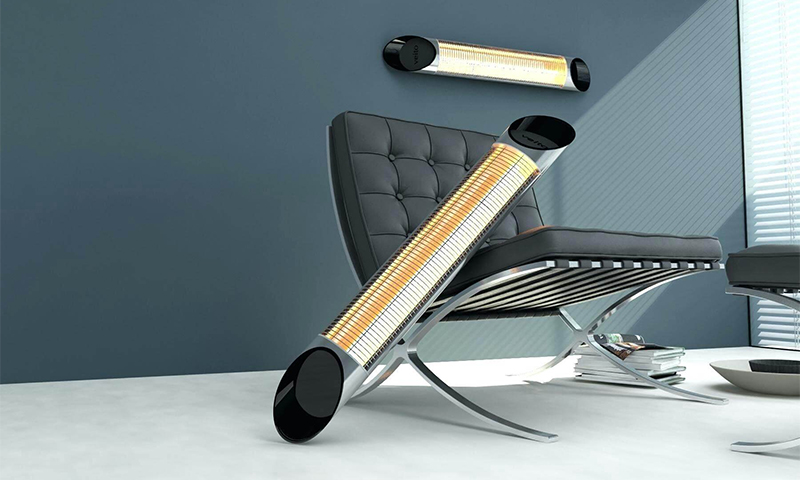The apartment heater is used as an alternative to centralized heating during the period of its disconnection or as an additional source of heat. When it is slush or cold outside, and at home it is cold and uncomfortable, the heater will warm the housing and create comfortable conditions in it. We suggest that you familiarize yourself with the recommendations of specialists before making the final choice of the desired device.

Content:
The best manufacturers of heaters - which company to choose
The traditional question is who is the best manufacturer and whose products should be preferred?
If it is not possible to dive into the study of climate technology, we recommend to pay attention to the products of trademarks:
- Noirot;
- Electrolux;
- Timberk;
- Ballu;
- Hyundai.
Specific models can be found in ranking of the best heaters. To form conclusions about the pros and cons of various types of this technique and determine which parameters are important when choosing a heater, you can after reading the article.
Principle of operation and heater device

Regardless of the type of heater in its design includes the following main elements:
1. Housing;
2. A heating element;
3. Temperature regulator.
All electric heaters have high efficiency (95-98%), since electrical energy is almost completely converted to heat. The key task of the device is to transfer the maximum amount of heat energy to the surrounding air or objects.
The principles of heat transfer used in heating devices can be as follows:
1. Direct heat transfer from the surface of the device to the space;
2. Creation of the directed streams of heated air;
3. Infrared wave radiation (warming up of surrounding surfaces, but not air mass occurs).
Types of heaters
Oil heaters
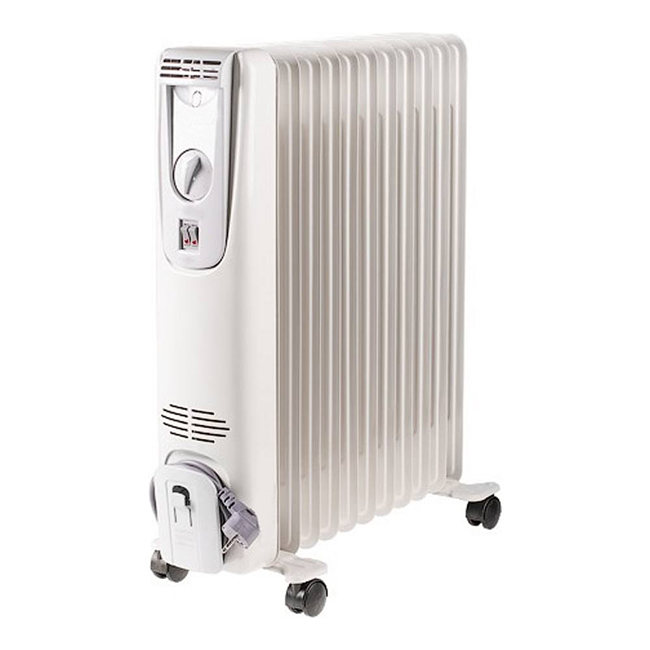
This is the most popular type of heaters used in apartments. The case of the device can be made in the form of sections or in the form of a panel. The panel heater takes up less space, and the sectional heater has a larger heating area and heats the room more efficiently.
The sections or panel of the device are filled with mineral oil, which is heated with the help of the heating element installed in the case (the oil accumulates heat well, does not form scale on the heater, and prevents corrosion). The heated coolant gives the body heat, which then enters the surrounding atmosphere.
Developers continue to improve oil heaters - some models have vertical channels that create powerful convection currents. To speed up the heating of the room in the design of some heaters turned on the fan.
Benefits:
- Reasonable price;
- Noiselessness during operation (for models without a fan);
- Mobility - small wheels allow you to easily move the device inside the apartment;
- Have several degrees of protection, including overheating. In case of accidental dropping of the device, emergency shutdown is triggered.
Disadvantages:
- The surface of the case is quite hot - it is undesirable to use the device in a room where there are small children;
- Slowly warmed up, reaching full capacity takes about half an hour (back side - the heater cools down slowly, it gives off heat for a long time even after turning it off);
- Increased power consumption;
- Considerable weight (on average 8-10kg).
- See also: top oil heaters
Convector heaters

Modern convectors, regardless of the type of execution, which can be wall-mounted or outdoor, easily fit into the interior. Some models resemble mobile oil heaters on wheels. The convector is distinguished by simplicity of design - the heater is placed in a metal case with special lattice holes in the base and in the upper part.
When using a convector, the room warms up evenly due to natural air circulation, in which warm and discharged air rises to the top, displacing down dense layers of air with a lower temperature. Then the cold layer warms up and then goes up again. The convector can be equipped with a fan, forcing the air mass to circulate, so that the room warms up faster.
The cases of some models have a special mimetic coating, due to which they acquire the shade that dominates the room.
Benefits:
- Noiselessness;
- Do not affect the humidity of the air, do not burn oxygen;
- High level of security - the case temperature of most models is no more than 50-60 ° С;
- The possibility of combining several heaters into a single network (for some models). This option is convenient for heating a house or apartment as a whole;
- Long service life (up to 10 years according to the documentation, in practice - 20-30 years);
- In comparison with oil heaters with equal power, they consume less electricity by 25-30%.
Disadvantages:
- The heat exchanger of the heater needs regular cleaning;
- Dynamic air circulation, which entrains the smallest particles of dust, can adversely affect the health of people prone to allergies.
Fan heaters
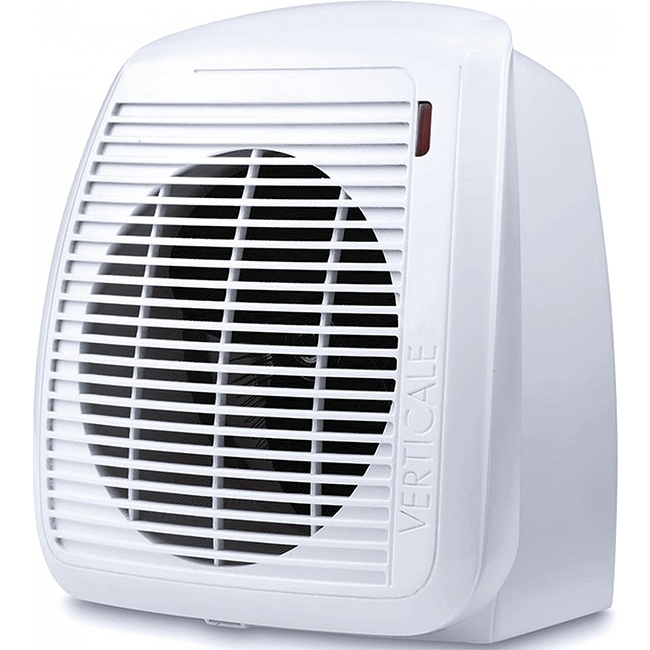
A heating element (spiral, ceramic plate or heating element) and a fan are installed in the housing of the device, thanks to which a warm air mass is supplied to the heating zone.
The spiral is heated to a temperature of about 800 ° C, the heating element is heated to 200 ° C, the temperature of the ceramic plate is less than 200 ° C. But even with this indicator, a fan heater with a ceramic heater gives no less heat than devices with other heating elements, due to the large heat transfer surface area.
1. Devices with a spiral faster than others are able to heat a room, but pollute the air by burning oxygen and small dust particles.
2. The fan heater with a ceramic heater does not pollute indoor air with combustion products.
To expand the heated area, the fan in many models of the device is rotated inside the case. Some devices blow warm air around the area extended to 180 °.
Benefits:
- Compactness;
- Simplicity of design;
- Low price;
- Rapid heating of indoor air due to forced convection. At the same time, the temperature of the air under the ceiling will not differ much from the temperature in the floor area;
- Multifunctionality (can be used as a fan).
Disadvantages:
- Increased noise level;
- An unpleasant odor is possible when using models with a spiral heater - dust particles deposited on the spiral form combustion products.
Infrared heaters
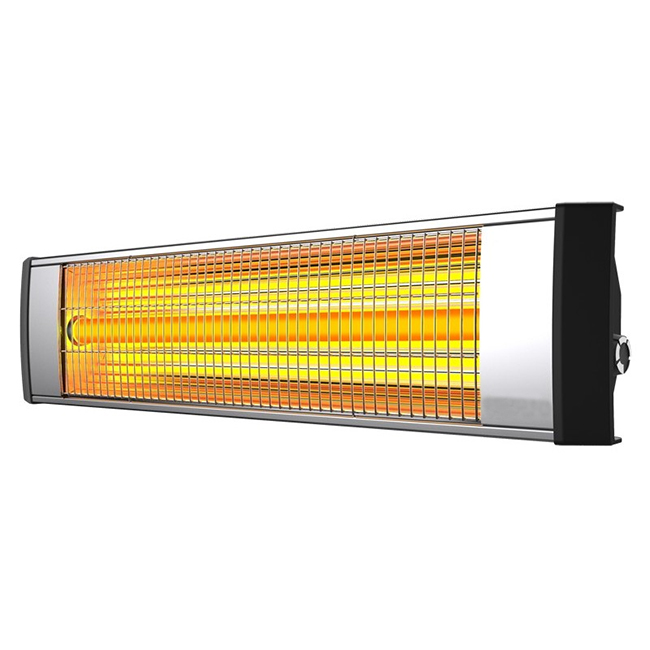
The main part of such a heater is a special element that emits infrared waves, which can be compared with the rays of the sun that pass through the air without affecting its temperature. But if in the area of the beam there is an object that does not transmit light, then the thermal energy of the beam is absorbed by this object and its temperature increases. Then from warm objects air mass is heated in the room.
Infrared heaters differ in wavelength, they are:
1. Shortwave (0.75-1.5 microns) - have a high temperature of the heating element (up to 800 ° C), which has a red glow. These include carbon, quartz and halogen heaters. Most often they are produced in wall or floor execution.Devices are used for fast and local heating of a person in a cool room.
2. Medium wave (1.5-5.6 microns) - Heater can have a weak red glow, its temperature is 500-600 ° C. Medium wave models are mainly used for heating production areas, warehouses.
3. Longwave (5.6-1000 microns) - the heating element can heat up to 250-300 ° C, there is no visible luminescence. As a permanent source of heat in the absence of centralized heating in the apartment or at the cottage using long-wave infrared heaters. They create a mild heat that heats the entire room evenly. As a rule, they have a ceiling version.
Advantages:
- Silent;
- Consume 30-40% less electricity than convectors;
- Do not burn oxygen and do not affect the level of humidity (modern long-wave models);
- Heat the room relatively quickly;
- Shortwave models allow local heating, as the infrared heater dissipates heat to a minimum;
- It can be used in open and semi-open areas (loggias, balconies, verandas).
Disadvantages:
- Higher price in comparison with other heaters;
- Ceiling models cannot be used in a room with low ceilings;
- Shortwave models are similar to a fan heater with a spiral that burn oxygen and cannot be used for a long time, as they provoke headaches;
- Long stay in the zone of action of the shortwave heater overdries the skin.
- See also: best infrared heaters
Heater selection options
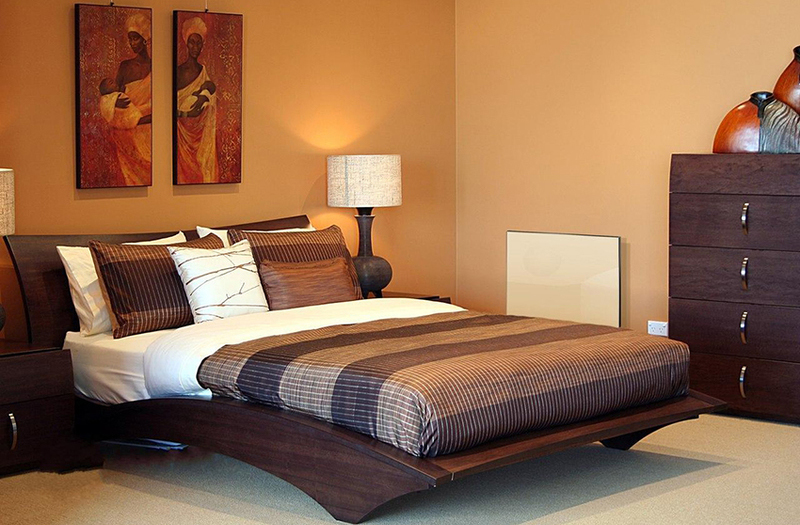
Execution
1. The most popular floor heaters. The device is easy to remove in the pantry, and if necessary get it. By moving the heater it is possible to maintain heat in a certain zone, and not to warm up a completely large room.
2. Wall and ceiling models, fixed in a certain place, allow to use the device at the slightest need. In this case, the network wire is not confused underfoot.
3. The tabletop model provides comfortable working conditions at the table, the heater can be moved to the floor, where it will quickly warm the legs.
Power
Power is selected on the basis of 1 kW per 10 m² of space. Most of the proposed household heaters have a power of 1.5-2 kW and are able to maintain heat in a room of medium size (15-20 m²).
Dimensions
When placing a heater in an apartment, it is necessary to take into account that during operation the device should not come into close contact with furniture and interior details. Air flow should flow freely around any side of the instrument.
Thermostat
Most modern models have a built-in thermostat that allows you to maintain the temperature in automatic mode.
1. The mechanical thermostat maintains the temperature with an accuracy of 1 to 3 degrees. As wear deteriorates its accuracy.
2. The electronic thermostat maintains the temperature with an accuracy of 0.1 degrees. It can be damaged by voltage drops in the network. If the electrical equipment of the apartment is protected by a voltage regulator, the electronic thermostat is more reliable.
Options
Most models have additional features, including:
1. Fireplace effect - the presence of special cracks in the body creates cravings, so that the air warms up faster;
2. Waterproof housing - allows you to use the device in the bathroom;
3. Frost protection is a function that is useful for residential use with non-permanent residence. The device will maintain the temperature in the room 5-8 ° C;
4. Overheat protection - the temperature sensor will turn off the device in case of exceeding the set temperature of the air flow;
5. Overturn protection - is provided in devices that must be operated exclusively in an upright position. When the heater falls, the heating is automatically turned off;
6. Timer - allows you to turn on the device in automatic mode at a set time.The device turns on, for example, an hour before the owner comes to the apartment;
7. Air humidifier or ionizer - devices for humidifying and enriching the air with negatively charged ions. They create more comfortable conditions indoors.
Which heater to choose

1. In the nursery you need equipment with a maximum degree of safety in the work: the convector meets these requirements. You can also purchase a fan heater with a ceramic heater. All other types of heaters can be used in the child’s room only under the supervision of the parents;
2. In the room of teenage children you can install a table fan - it is comfortable to prepare lessons and read books at the table with him;
3. For a bedroom, it is better to purchase a model that does not include a fan (convector or oil). Using a portable IR heater, you can warm the bed before bedtime, and then turn it away from the bed;
4. In the bathroom, you can use any of the types of equipment for heating in a waterproof performance;
5. At the cottage will quickly warm the frozen amateur gardener with a short-wave infrared heater or a small fan heater.
How much is the heater

Below are the estimated prices for 2 kW heaters:
1. Oily: from 2 to 5 thousand rubles;
2. Convector: floor - from 1.7 to 4,2 thousand rubles, wall-mounted - from 2 to 15 thousand rubles; plinth - from 18 to 30 thousand rubles;
3. Fan heaters: spiral - from 0.5 to 2.5 thousand rubles, with heating elements - from 1.7 to 4.6 thousand rubles; ceramic - from 1.4 to 24 thousand rubles;
4. Infrared: shortwave - from 2 to 4 thousand rubles., Long-wave - from 3.3 to 5.5 thousand rubles.
It will be interesting to friends too

